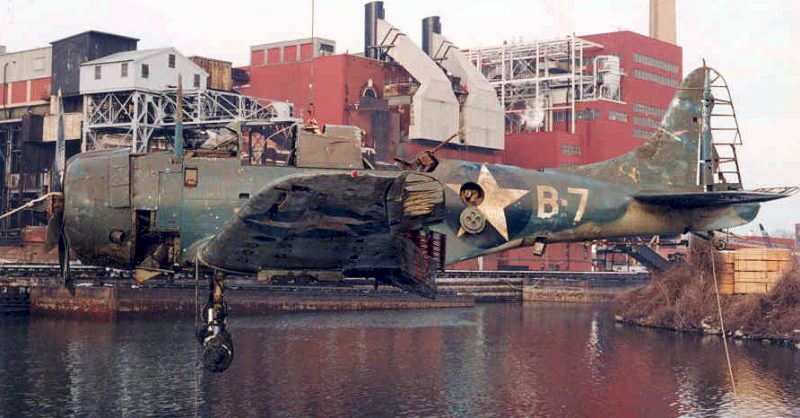Take away the title Lake Michigan and that large body of water could be the Pacific Ocean.
It became so after the Japanese attack on Pearl Harbor in December 1941 and the duration of the Second World War. For it was there the US Navy, not ready for a large-scale war, trained pilots.
Seventeen thousand pilots earned their wings learning to land and take off on improvised aircraft carriers. But it wasn’t without cost. Between March 1942 and September 1945, approximately 130 aircraft sank, and ten pilots died in the chilly waters.
Now, A&T Recovery of South Bend, a company that works to salvage these overlooked airplanes, has recovered nearly 50. They employ side-scan sonar, similar to ultrasound, to locate aircraft far below the surface.
Taras Lyssenko, A&T Recovery General Manager, explains that it works by sending a sound wave. When the echo returns, an image can be drawn electronically.
Three recovered planes are in Kalamazoo at the Air Zoo. The restoration of one is already finished, and two are in the process. Numerous volunteers, up to 100, donate their time and effort to have the planes look as they did before they slipped beneath the water.
Since the tools used in the 1940s no longer exist they have to make their own so parts can be repaired, explained Restoration volunteer Kevin Mazer.
“When these airplanes come out of the water they are covered inside and out with mussel shells, and they’re living creatures,” said Air Zoo Aircraft Conservator, Greg Ward. They’re an invasive species not native to these waters, and they can promote corrosion.
But time is inexorably ticking away for other planes on the bottom covered in mussels. Getting funding is close to an emergency, he said. If these planes aren’t recovered they’ll be reduced to underwater dust, WSBT reported.
Schools and the public are invited to help the Air Zoo with restoration. Instead of doing restoration behind closed doors, they want active participation, so the work is not only seen but the evolution of the restoration is visibly documented.
